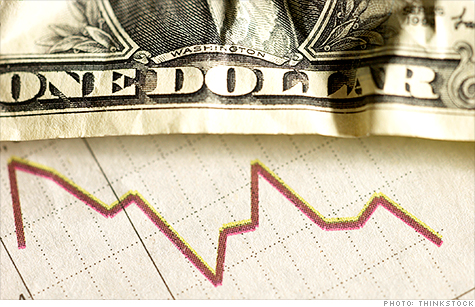Search News

(Money magazine) -- The difference between getting to $1 million and falling short can come down to a margin as thin as 1 percentage point a year when it comes to your returns-- or slimmer. That's even if you have fewer than 20 years to hit your target, and even if equities never fully return to their former glory.
Part of a special report on How to reach $1 million this story offers advice on how to increase your investment returns each year so you'll be on your way to a million-dollar portfolio.
KEY MOVE: Boost your annual returns by a percentage point.
HOW TO GET THERE
Tone your core. The traditional way to boost gains is to tilt toward stocks.
To ratchet up your returns by a point a year, though, you may have to be willing to shift from, say, a modest 60%-stock/40%-bond strategy to a far-riskier 80%-equity/20%-fixed-income mix. Ugh.
There's a safer way. Cut the fat from your core portfolio -- without changing your overall equity exposure -- simply by replacing your existing investments with low-cost exchange-traded funds.
"Now may be a particularly good time to do this," says Bill Allen, vice president of portfolio consulting at Schwab.
Why? If you've owned your core funds for five to 10 years, they probably haven't produced many taxable gains. So switching may not trigger much of a tax bill (obviously, this isn't a concern in tax-sheltered accounts).
Also, if you sold any funds that sunk in 2008, you may be sitting on realized losses that you can use to offset gains caused by swapping.
You can assemble a diversified portfolio of ETFs for just 0.4% a year -- 0.6 points cheaper than a typical portfolio of managed funds. You can do even better with cheaper-than-average choices. This simple move, then, can get you more than halfway to your goal.
Earn more by doing less. Reacting impulsively to big swings in stock prices can open up potholes on the road to $1 million. In the 2000s, investors earned 1.4 points less a year than the average U.S. equity fund owing to mistiming the market.
Close this gap by a third -- just by being more patient -- while cutting costs and you'll reach your one-point goal. Set your stock-and-bond mix to your desired level. Then only touch your holdings once a year, on a predetermined date, to rebalance your mix back to your desired weightings.
That's what helped Brent Boynton, 60, and his wife, Roxanne, 54, of Sun Prairie, Wis., recover from the 2008 crash. Like most investors, the couple didn't see the sell-off coming until it was too late. "However," says Brent, "we rebalanced our portfolio in early 2009 and have more than made up for our 2008 losses."
Take a "smart" flier on a potential highflier as a bonus. Regret not betting on Apple (AAPL, Fortune 500) when it was a $6 stock in 1990? There's nothing wrong with taking a flier, if the wager is small enough not to miss and if you set some smart ground rules.
Start small. Big stocks lack speed. Go with industries where demand will keep growing no matter what, says James Stack of InvesTech Research -- like energy, which stands to benefit from the rise of emerging markets. For safety's sake, though, focus on shares that have been pummeled lately. Small-cap oil and gas stocks, for instance, are down 32% since last spring.
GETTING INTO GEAR
Go for instant gratification. If you have little saved, choose funds that give you the broadest exposure. Own the whole U.S. market through Vanguard Total Stock Market ETF (VTI) and Vanguard Total Bond Market ETF (BND).
Take the match. If your 401(k) offers you a 50 cents-on-the-dollar match up to 6% -- as many plans do -- that's a 50% risk-free return. Take it.
Don't go all in. You never want to be forced to sell stocks at the worst times in the market simply because you need the funds. Wells Fargo adviser Marcia Tillotson says keeping six months' worth of expenses in cash should be sufficient when you're young.
YEARS TO $1 MILLION
Assume you have $250,000 saved and are socking away $10,000 a year. You can easily speed up your road to $1 million:
And in 21 years, you'll have nearly a quarter more saved:
Notes: Average portfolio assumes 6% returns with one percentage point lost to fees. Low-cost portfolio assumes 6% returns and 0.4 points lost to fees. Low-cost/low-mistake portfolio assumes 6.4% returns minus 0.4 points in fees. Sources: Morningstar, Money research ![]()

Carlos Rodriguez is trying to rid himself of $15,000 in credit card debt, while paying his mortgage and saving for his son's college education.
| Overnight Avg Rate | Latest | Change | Last Week |
|---|---|---|---|
| 30 yr fixed | 3.80% | 3.88% | |
| 15 yr fixed | 3.20% | 3.23% | |
| 5/1 ARM | 3.84% | 3.88% | |
| 30 yr refi | 3.82% | 3.93% | |
| 15 yr refi | 3.20% | 3.23% |
Today's featured rates: